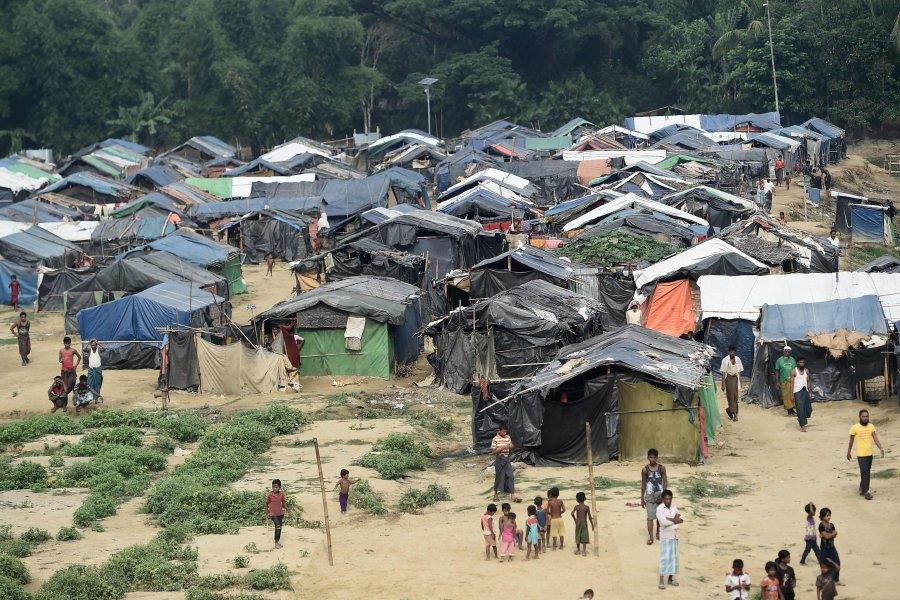UNITED NATIONS, April 27 (Xinhua) -- Members of the UN Security Council were headed on Friday to see for themselves the more than 1 million Rohingya refugees in Bangladesh while UN officials remind donors that 951 million U.S. dollars are still needed for the refugees and impoverished local residents.
The council entourage made a stopover in Kuwait before flying to Bangladesh on Friday where they were to visit the capital Dhaka and refugee camps in the Cox's Bazar area in the extreme south of the country, officials said. On Monday, they were to reach Myanmar.
Chief UN spokesman Stephane Dujarric told reporters that the Office for the Coordination of Humanitarian Affairs reported the overall population of Rohingya refugees from Myanmar in Bangladesh is currently estimated to be over 1 million people.
Some 670,000 of them arrived since a deadly Aug. 25, 2017 Rohingya militant attack on security posts was met with alleged severe retribution by Myanmar government forces and militia, the UN Refugee Agency said.
New refugees are still arriving with some 8,000 new arrivals since January, said the UN spokesman.
"The government and people of Bangladesh have displayed extraordinary generosity toward Rohingya refugees, with support by the international community," he said.
"The latest round of food distribution reached over 470,000 people," he said. "Over 5,000 tube wells and 47,000 latrines have been built, and more than 90,000 children have received primary school education."
Humanitarian partners on the ground also conduct protection monitoring missions to support survivors of sexual and gender-based violence and are also strengthening preparedness efforts to the incoming cyclone and monsoon season, Dujarric said.
Officials have been trying to prepare the sprawling camps situated on hills and valleys from the imminent, flooding monsoon rains.
"Over 65,000 households have received supplies to make their existing shelters monsoon-proof," the spokesman said. "More than 15,000 refugees in particularly at-risk areas will soon be moved to safer ground, and construction of access roads is also progressing."
He said that so far the Joint Response Plan for the Rohingya Humanitarian Crisis, launched in mid-March, is only 9 percent funded. It requests 951 million dollars to respond to the needs of some 1.3 million people, both Rohingya refugees and vulnerable members of the host community until December 2018."
It is this crisis that members of the council hope to see first hand. The 15-member panel has been trying for months to get to Myanmar and see first-hand northern Rakhine State -- just across the border from Bangladesh -- from where the refugees have fled. Finally, the Myanmar government, which had said timing just yet wasn't right, gave the green light.
The Cox's Bazar region of Bangladesh already had been playing host to hundreds of thousands of Rohingyas who had fled Rakhine State before the Aug. 25 incident.
After visiting the camps in Bangladesh over the weekend the council mission is expected to visit Myanmar's capital of Nay Pyi Taw and areas in northern Rakhine State that were affected by the violence beginning last August and from which most refugees fled.
Refugees arriving in Bangladesh have said the forces they had fled raped and killed women and children as well as attacking men. Then, they said, their villages were burned to the ground.
The Rohingya are ethnic Muslims living in overwhelmingly Buddhist Myanmar.
Most of the refugees do not have Myanmar citizenship and are expected to face hurdles at least on that count if they wish to return to their villages.
One of the foremost objectives of the Security Council is to allow the Rohingya to return -- when and if they want to -- in a safe and dignified manner.
